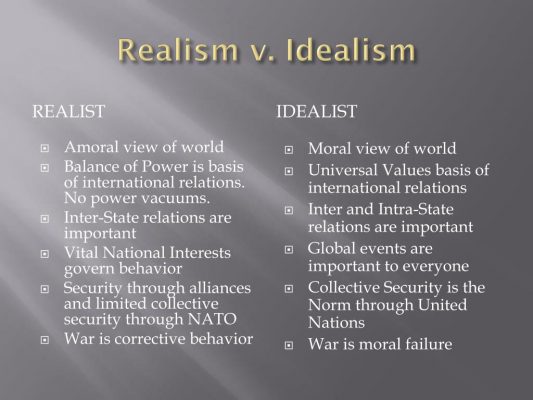- Home
- Prelims
- Mains
- Current Affairs
- Study Materials
- Test Series
 EDITORIALS & ARTICLES
EDITORIALS & ARTICLES
India's Realist International Policy
The 21st Century has been heralded as the Asian Century, with China and India in the vanguard. However, serving national interests gets into conflict with adherence to internationalism by the two countries.
Further, China’s aggressive posturing vis-a-vis India in the recent galwan valley clash or under construction China-Pakistan Economic Corridor (CPEC) (which violates India’s territorial sovereignty) has been a major foriegn policy challenge of India.
Thus, as highlighted by India’s External Affairs Minister, the major challenge that India now faces is to manage a more powerful neighbour while ensuring its own rise.
Though Internationalism has always been a key pillar of India’s foreign policy, there is a need for a more realistic foreign policy with respect to China.
 Need for International Realism
Need for International Realism
 Need for International Realism
Need for International Realism
- Loop-sided Economic Trade: The advocacy in India of more trade with China has now given way to strong resentment at its one-sidedness.
- Due to a huge trade deficit India has developed a dependence on Chinese goods.
- Given this fact, India pulled out of the Regional Comprehensive Economic Partnership (RCEP), as there was a contradiction between India’s national commercial interests and a China-led Asian economic regionalism
- Expansionism of China: China is behaving like an ‘irredentist power’ or ‘expansionist power’, seeking to expand its frontiers to the limits that existed in the Qing Dynasty.
- China has been inclined for long to nibble at territories in the western, middle and eastern segments of the Indian border.
- Through the BRI project, China’s intent is to dominate the geostrategic space in its neighbourhood and across Asia & Europe.
- Increasing Influence of China: After the Cold War, India re-embraced Asianism in the 1990s when it unveiled the Look East Policy and joined the Asian regional institutions led by the Association of South-East Asian Nations.
- This pursuit of economic regionalism in East Asia and emphasis on a multi-polar world had severely underestimated the economic and political consequences of China’s rapid rise.
- This can be depicted by China's policy of containment of India through Strings of pearls and CPEC.
- Undermining of Global Institutions: The liberal internationalist effort at constructing supra-national institutions that seek to maintain international order, now faces big setbacks.
- This can be depicted by the growing ineffectiveness of the UN system and Brexit.
- Also, today strategic coherence of the Non-Aligned Movement has declined.
- Leveraging its Relationship With Western Countries: India is already a “quasi-ally” of the U.S. and has strategic relationships with many european countries.
- As there is no scope for reversal, India should use every possible means to prevent China from reaching the Indian Ocean.
- Strategic convergence between India and countries like the U.S, Japan, Australia, Vietnam, Indonesia is needed to frame a Indo-Pacific Strategy and balance China’s military and economic power.
- Quadrilateral Security Dialogue (Quad), can also be extended to include like-minded countries.
- Also, proposals to expand international organisations such as the G-7 and include India will be helpful in balancing China’s influence in international affairs.
- Strengthening Hard Power: There is an urgent need to strengthen Mountain Strike Corps divisions and establish a theatre command.
- This is bound to deter China here far more than the stockpiling of state-of-the-art weapons.
- Adopting Diplomatic Offensive: India needs to highlight its peaceful intentions in stark contrast to China’s aggressive policies and tactics.
- India’s well-designed technical aid programmes not only provide an enduring link between India and other developing countries but are in contrast with Chinese aid whose aims are political and economic subjugation.
- India can revive NAM to achieve this end.
- Neighbourhood First Policy: India must pay particular attention to countries in its neighbourhood, such as Nepal and Bangladesh, and allies such as Iran and Vietnam, which seem to have frayed at the edges with India being more intent on strengthening relations with the West.
- Smaller countries of Asia, which constantly face China’s aggressive interference in their internal affairs, have not received much support from India, and this needs India’s attention.
- Leveraging Soft Power: India should take pole position in propagating ‘Himalayan Buddhism’ which China has been seeking to subvert to achieve its ends.
- India’s credentials here far outweigh that of China’s and should produce excellent dividends.
- Becoming Self-Reliant: India urgently needs to increase exports and investments to provide more well-paying jobs, technology, and know-how.
- Further, in the long run India needs to decouple its economic dependence from Chinese imports and achieve self-reliance.
- Bold reforms offer the best option to achieve this goal and achieve greater independence on the world stage. The Atma-Nirbhar Bharat scheme is a step in the right direction.









 Latest News
Latest News General Studies
General Studies